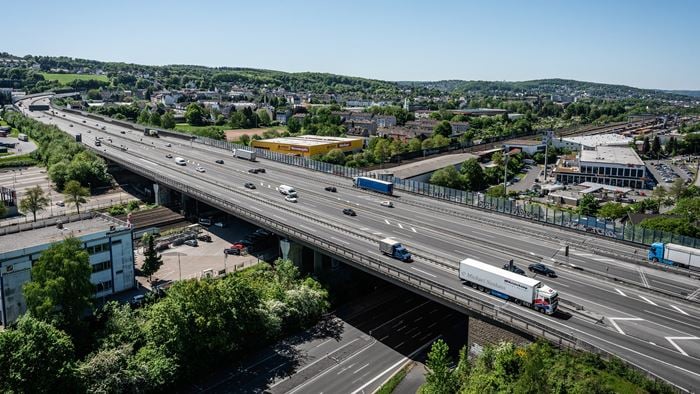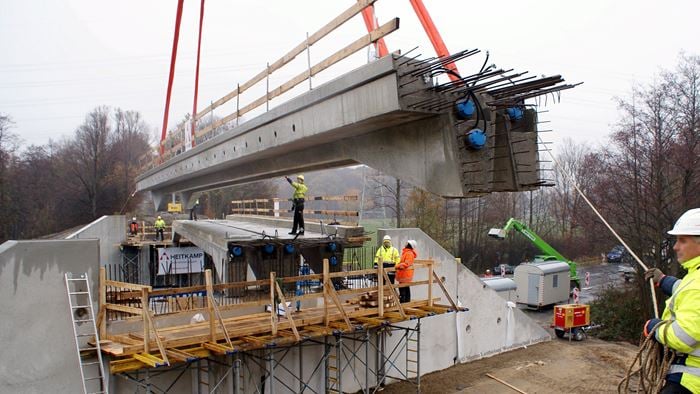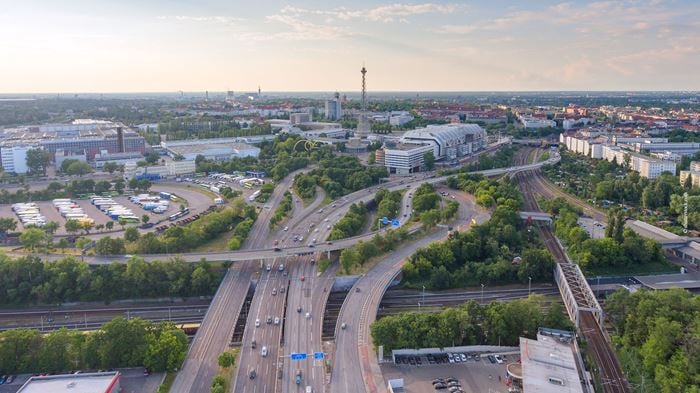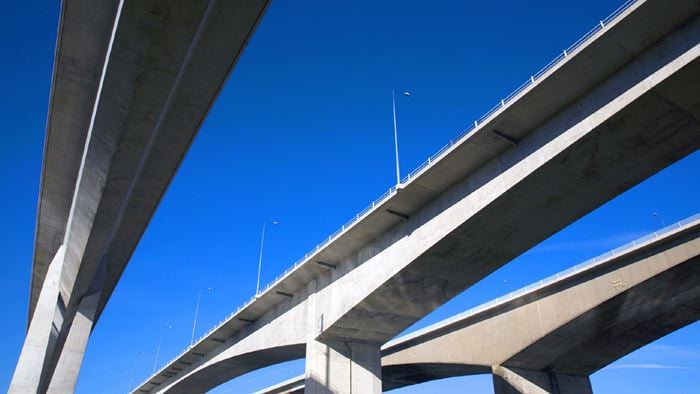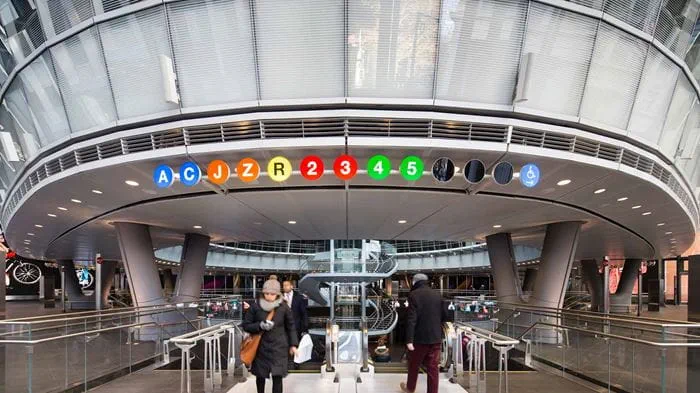Mühlendamm Bridge is the oldest river crossing in Berlin, connecting the German capital across the river Spree. The crossing spans the Bundesstraße 1, the most important thoroughfare in the Mitte district. Dominating the public space in downtown Mitte, the bridge and its surroundings are of great importance to the oldest part of Berlin's inner city.
The existing prestressed concrete bridge from 1968 will soon reach the end of its lifespan. With traffic restrictions already in place, there is a growing need to replace the bridge. The new Mühlendamm Bridge has been designed to improve traffic flow and supporting Berlin's mobility transformation in two stages, with the second phase creating more space for pedestrians and cyclists. As an important part of Berlin's historic Mitte district, Mühlendamm Bridge will offer space for a range of urban mobility modes in the future, but also a new level of amenity value.
In the following competition, our joint design with Cobe Architects achieved first place. Together we are now working on the planning so that the replacement can begin as soon as possible.
Ready for the mobility transformation
Active travel modes are at the heart of the new crossing design. The future bridge makes room for bicycles on the upper level. Sidewalks will be arranged on the two outer sides of the bridge.
The new crossing will also include space for trams on the line joining Alexanderplatz to Potsdamer Platz. In this way, different types of mobility will use different levels, ensuring a greater sense of safety.
Bridge as public space – connecting to the river bank
With its concave shape, which tapers towards the center, the bridge will integrate into the urban space and at the same time enhance it. The sides of the riverbank will be connected in an optimal way. On the southwestern side, steps will lead to the lakeside park on Fischerinsel. Diagonally opposite, a shallow curve will lead to the waterfront promenade of the Nikolai quarter.
After extensive participation processes and a revision of the plans, the structure will be narrowed, with the winning design paying greater consideration to pedestrian and bicycle traffic. A separate cycle lane is included as part of the design, while the middle lanes can be used by motorised individual traffic until the two-track tram line from Alexanderplatz to the Kulturforum is completed. With further reduction of car traffic, the redevelopment of additional areas in favour of pedestrian and bicycle traffic is possible.
“The main function of bridges is to connect. However, Mühlendamm Bridge is about more than just connecting two riverbanks. This bridge is intended to offer a wide variety of uses and thus becomes a valuable and readily used part of Berlin's urban space. ”
Markus Gabler Leader bridge design at Arup in Germany
Continued use during construction
In addition to the construction of a new steel composite bridge, the plans also include the demolition of the existing bridge. The half-sided dismantling is intended to ensure continuous traffic use during the construction phase. This involves alternating between the construction of a new section and the subsequent dismantling of an existing one.
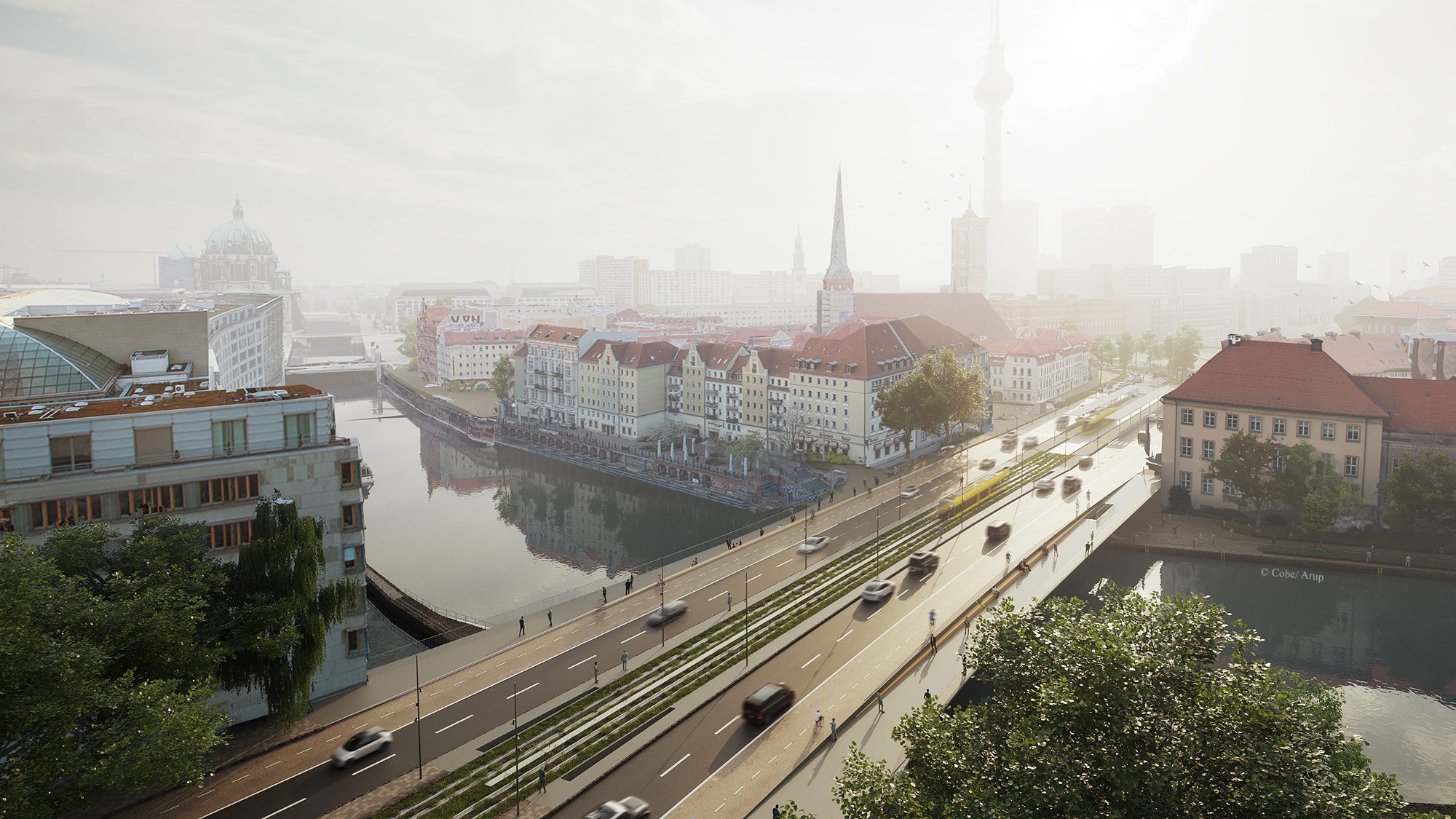 ;
;


